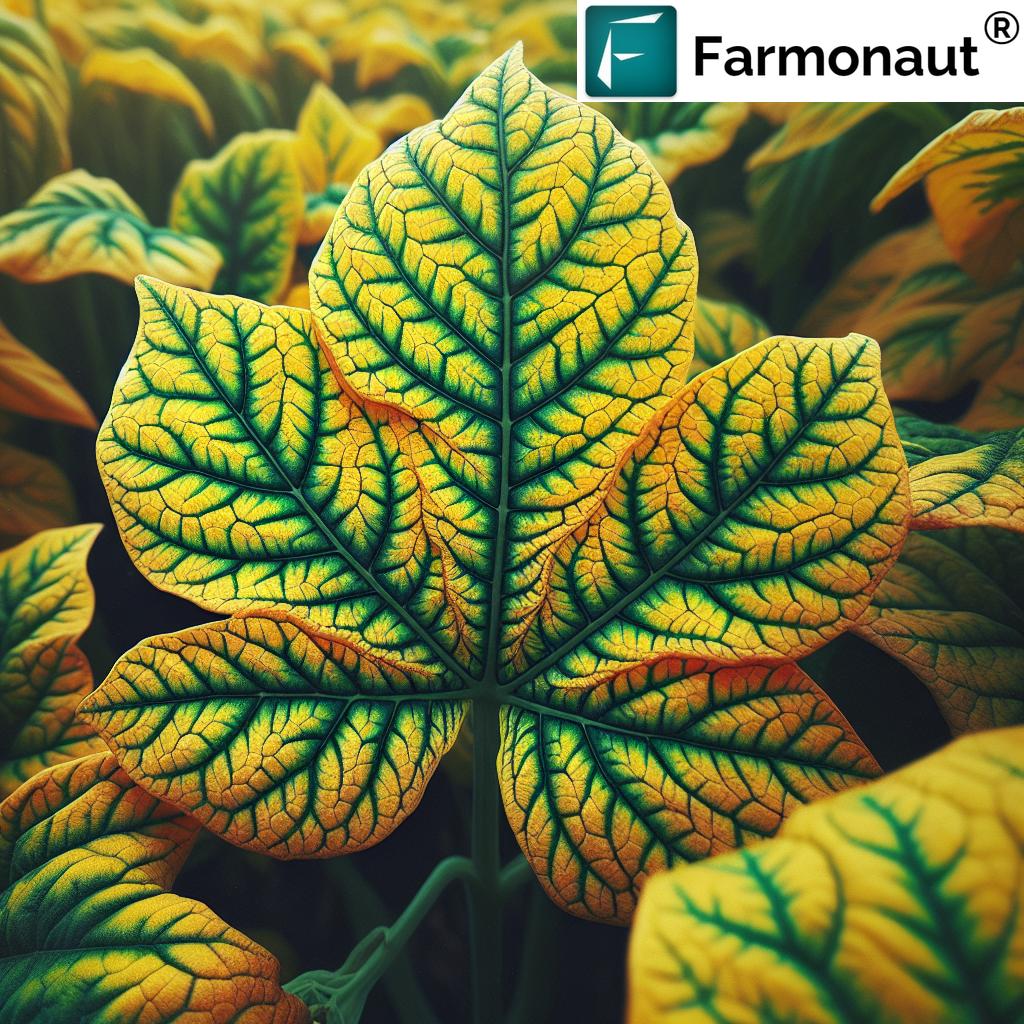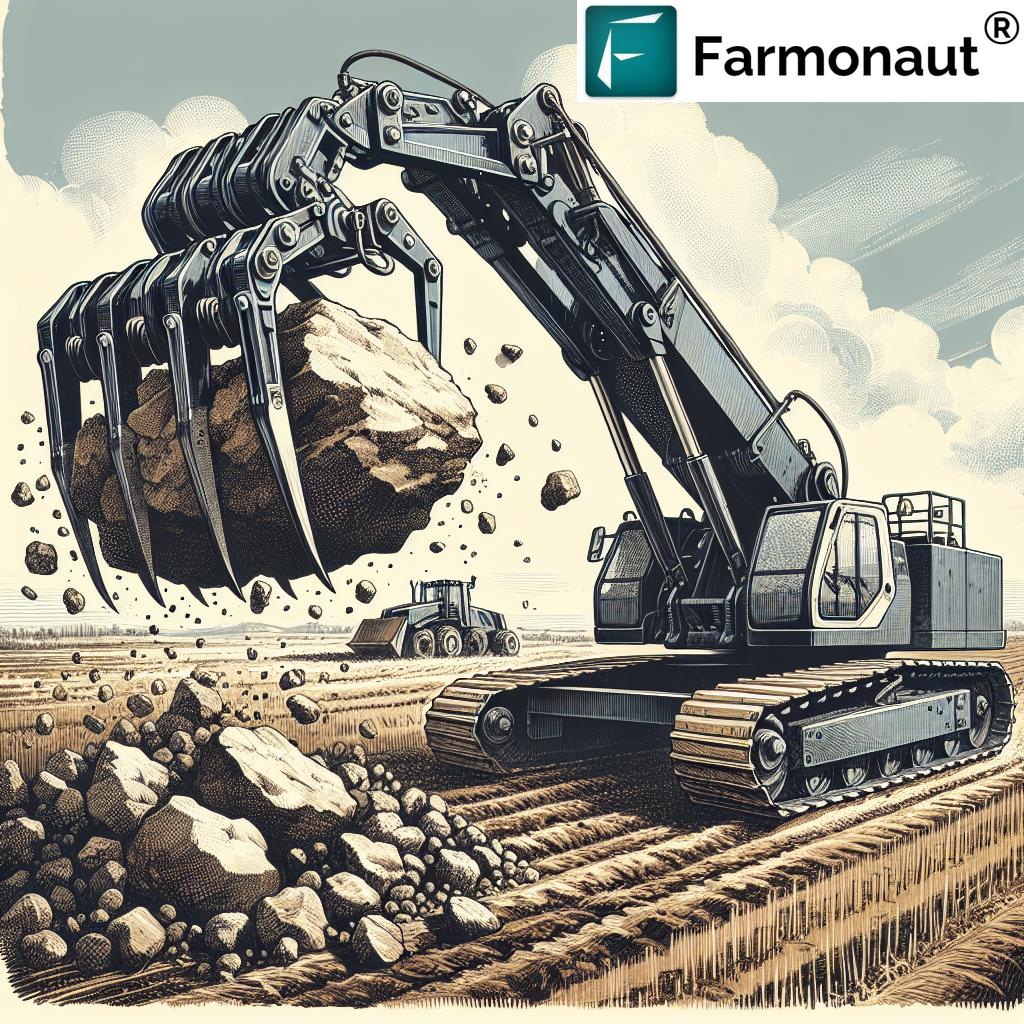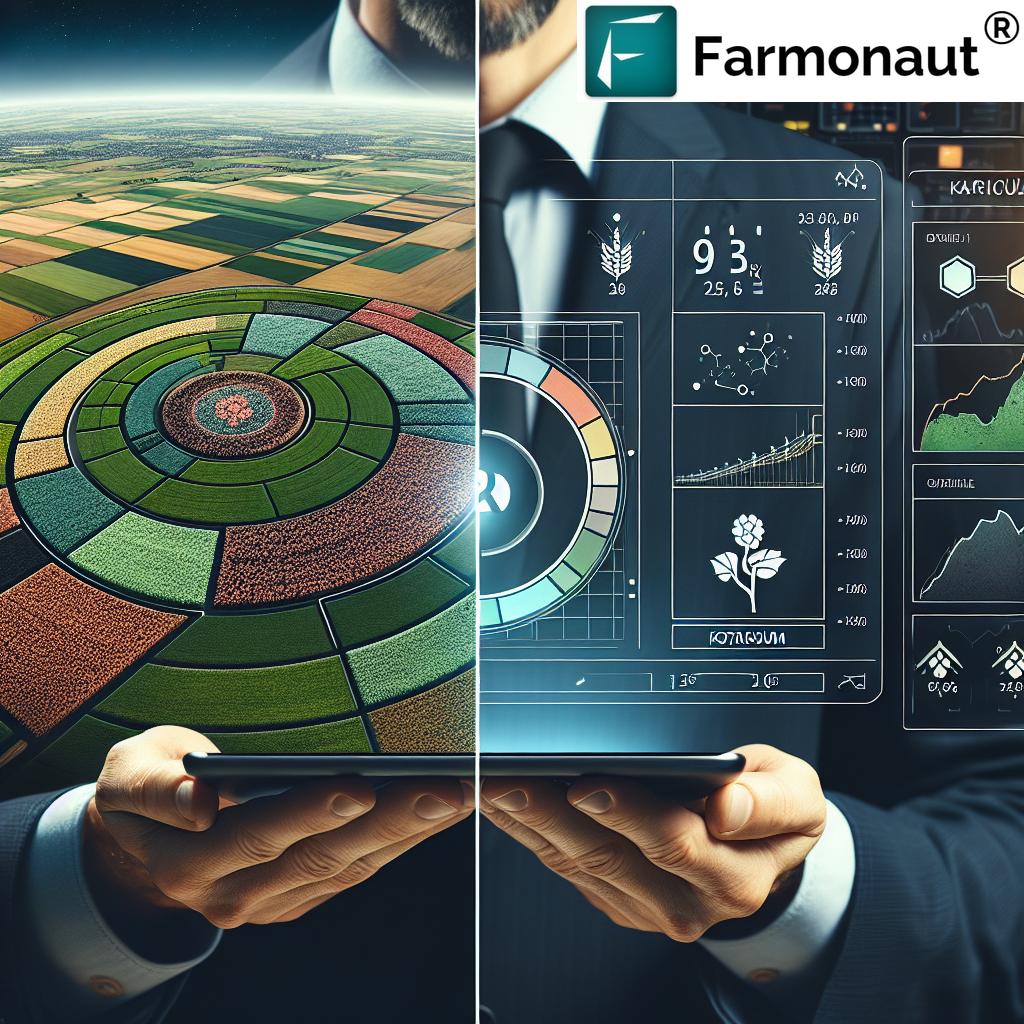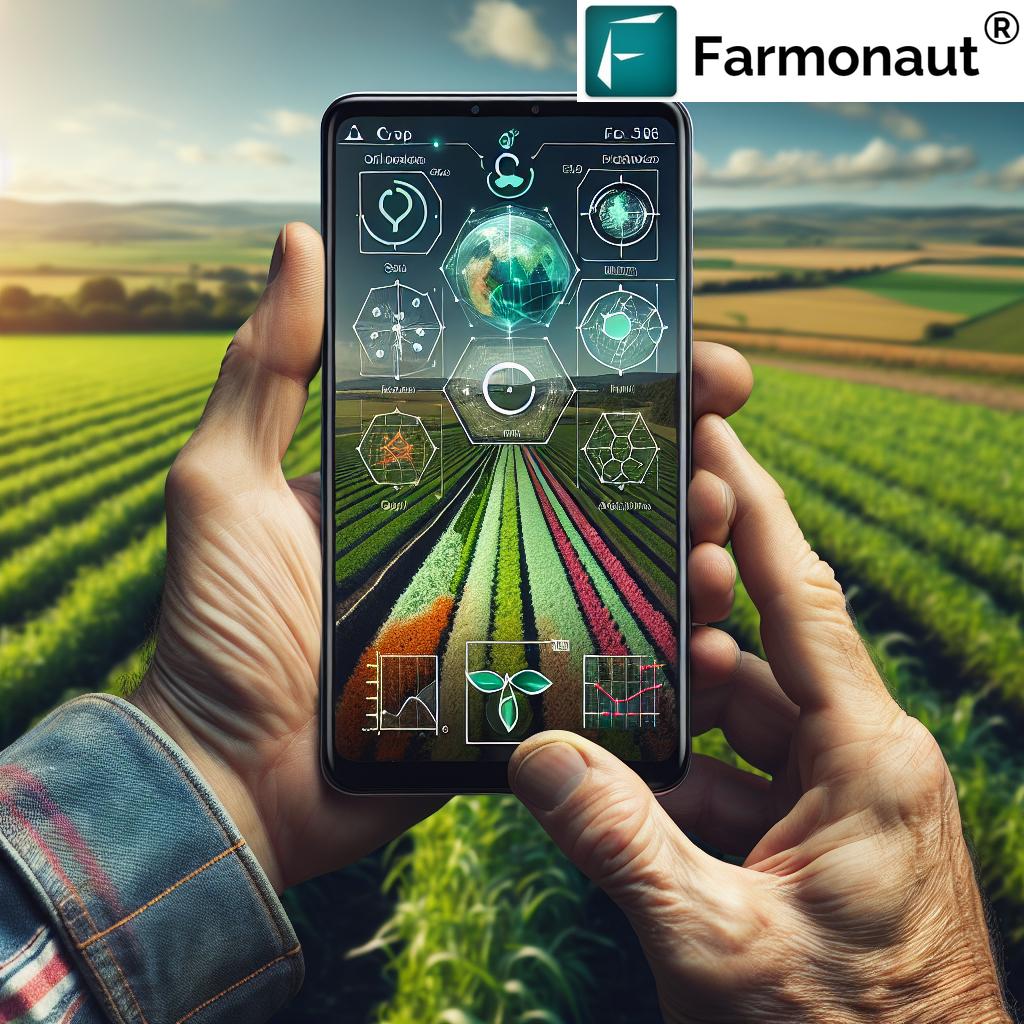Robotics in Agriculture: Precision Farming & IoT Trends 2025
Meta Description: Discover how robotics in agriculture—powered by IoT, AI, and precision farming—are revolutionizing modern farming practices for efficiency, sustainability, and growth in 2025.
Table of Contents
- Introduction: How Robotics Is Revolutionizing Agriculture in 2025
- Did You Know? [Trivia]
- Key Drivers: Need for Robotics & IoT in Modern Agriculture
- Robotics in Precision Agriculture: Smarter, Data-Driven Farming
- IoT and Robotics: Synergy for Next-Level Agricultural Practices
- Video Gallery: See Robotics & IoT in Action
- Comparative Trends Matrix: Robotics in Precision Agriculture 2025
- Agriculture Robotics Market 2025: Growth & Trends Analysis
- Future Fact: [Midpoint Trivia]
- Challenges Facing Robotics & IoT in Agriculture
- Farmonaut: Enabling Smarter, Sustainable Farming Solutions
- The Future of Robotics in Agriculture: Beyond 2025
- FAQ – Precision Farming Robotics & IoT
- Conclusion
Introduction: How Robotics Is Revolutionizing Agriculture in 2025
Robotics in agriculture is no longer a vision of the distant future—it is a transformative reality. As we propel into 2025, the fusion of advanced robotics, precision agriculture, and IoT (Internet of Things) technologies marks a transformative milestone for global farming practices. This milestone is characterized by unprecedented levels of productivity, sustainability, and resource efficiency. Robotics in precision agriculture is rapidly evolving to tackle pressing challenges: surging global demand for food, ongoing labor shortages, environmental impact concerns, and the need for accurate, data-driven management.
This comprehensive analysis provides in-depth insights into robotics in agriculture theme analysis, market trends, the synergy between IoT and robotics, and the impact of these innovations in 2025. Throughout this article, we’ll explore:
- The rise and evolution of robotics in precision agriculture and farming
- How IoT-based approaches are enabling smarter, more efficient cultivation
- The agriculture robotics market outlook for 2025 and beyond
- Key challenges, emerging trends, and future opportunities
Key Drivers: Need for Robotics & IoT in Modern Agriculture
In the current global landscape, agriculture faces immense pressures:
- Rising demand for food due to global population growth
- Intensifying labor shortages on large and small farms alike
- Environmental impact concerns: resource depletion, chemical runoff, and soil quality degradation
- Increasing need for efficiency, accuracy, and traceability in food production
Robotics in farming emerges as a solution—enabling automation of labor-intensive tasks, improving yields, and supporting environmental sustainability through advanced technology. Coupled with IoT in agriculture theme analysis, robotics leverages real-time data, connectivity, and AI-driven decision-making to optimize every phase of agricultural production, from planting and weeding to harvesting and resource management.
Robotics in Precision Agriculture: Smarter, Data-Driven Farming
The core of precision agriculture is the use of data-driven approaches to optimize field-level management—ensuring resources like water, fertilizer, and labor are deployed efficiently and only where needed. Robotics in precision agriculture takes this methodology to new heights, introducing autonomous machinery and sensor-equipped robots capable of highly precise intervention in the field.
Key Applications of Robotics in Precision Agriculture
- Seeding & Planting: Autonomous robotic planters deliver seeds with centimeter-level accuracy, ensuring optimal crop density and minimizing waste.
- Weeding & Pest Control: Agribots equipped with machine vision precisely identify weed species and mechanically remove them without chemicals, decreasing environmental impact.
- Harvesting: Robotic harvesters autonomously pick fruit and vegetables, detecting ripeness by analyzing color, size, and maturity with AI-powered cameras.
- Monitoring & Disease Detection: Drones perform multispectral imaging to detect early signs of nutrient deficiency, disease, and crop stress—enabling early intervention and yield maximization.
- Input Application: Robots intelligently apply fertilizers and pesticides only where needed, minimizing usage and run-off.
Example: A drone equipped with multispectral sensors flies over a wheat field, sending real-time data on leaf color and chlorophyll content to a central management system. Where patches of nutrient deficiency are found, the system directs ground robots to precisely apply fertilizers, ensuring healthier growth while saving costs and protecting the soil.
Advantages of Robotics in Precision Agriculture
- Labor Savings: Robots automate repetitive, intensive tasks—reducing reliance on manual labor and mitigating shortages.
- Resource Efficiency: Inputs are used only where and when required, decreasing waste.
- Yield Improvement: Early detection and precise interventions lead to improved crop health and higher yields.
- Environmental Stewardship: Targeted applications protect soil quality and reduce chemical runoff, promoting sustainability.
- Continuous Monitoring: 24/7 surveillance allows for rapid response to adverse events, maximizing resilience.
This “robotics in agriculture theme analysis” underscores a pivotal shift: robots are not simply substituting labor but enabling smarter, more sustainable management of agricultural systems.
IoT and Robotics: Synergy for Next-Level Agricultural Practices
The convergence of IoT (Internet of Things) with robotics is accelerating transformative trends in farming. IoT in agriculture theme analysis reveals how networks of sensors embedded in soil, crops, and machinery collect massive quantities of real-time data—feeding robotic platforms and AI systems that analyze and act upon that data instantly.
How the IoT and Robotics Fusion Works:
- Environmental Sensing: Soil sensors report moisture, nutrient, and temperature levels to the cloud.
- Machine Vision: Robotic sprayers and weeders use embedded AI and cameras to identify crops and weeds, distinguishing healthy vs. diseased plants.
- Predictive Maintenance: IoT devices monitor machine health, enabling proactive repairs for minimizing downtime.
- Remote Control & Connectivity: Farmers manage autonomous platforms from their smartphones or centralized control rooms, even across vast or multiple locations.
- Data Integration: Real-time, multisource data enhances machine learning models, continually refining robotic performance.
In 2025, robotic platforms within agriculture are characterized by seamless connectivity, robust data flows, and cloud-based analytics. This empowers precision monitoring, autonomous intervention, and strategic farm management at unprecedented levels.
Why IoT and Robotics Integration Matters
- Optimizes Water Usage: Irrigation robots receive instant soil moisture data, applying water only as needed. This can save up to 50% of water resources.
- Enhances Food Traceability: Real-time tracking, combined with blockchain, provides a secure record from farm to plate—promoting transparency and food safety.
- Reduces Input Waste: Sensors detect when and where fertilizers are needed, so applications are highly targeted.
- Boosts Farm Productivity: Robots running on IoT-enabled data can automatically adjust their actions as field conditions change.
This deep integration of IoT and robotics is at the heart of the transformation happening in agriculture in 2025.
Comparative Trends Matrix: Robotics in Precision Agriculture 2025
Below is a comparative matrix of major technologies revolutionizing agriculture in 2025, highlighting their adoption rates, core functions, and projected market impact:
| Technology / Innovation | Core Function | Estimated Adoption Rate in 2025 (%) | Key Benefits | Estimated Market Growth ($B) |
|---|---|---|---|---|
| Autonomous Tractors | Fully automated plowing, seeding, hauling | 58% | Labor savings, efficiency boost, scalability | $6.1B |
| Agricultural Drones | Aerial crop monitoring, spraying, imaging | 72% | Early detection, input savings, yield gains | $4.5B |
| IoT Sensors & Networks | Soil, crop, weather & machine monitoring | 80% | Resource efficiency, remote management | $3.3B |
| AI-based Crop Monitoring | Disease, pest, nutrient & yield prediction | 63% | Higher yields, reduced loss, smarter farming | $2.7B |
| Robotic Weeders | Mechanical removal of weeds, no chemicals | 45% | Cost reduction, environmental benefit | $2.1B |
| Blockchain-based Traceability | Supply chain tracking and verification | 35% | Transparency, food safety, fraud prevention | $1.3B |
Source: Robotics in Precision Agriculture & Agriculture Robotics Market 2025, industry estimates and trend analysis.
Video Gallery: See Robotics & IoT in Action
Ready to see these game-changing innovations in action? Check out the following featured videos:
- Discover how AI, drones, and data integration are boosting precision farming in 2025.
- Understand how Farmonaut leverages satellite data and advisory platforms to empower farmers globally.
- Learn why traceability and carbon footprinting matter in sustainable agriculture.
Interested in real-time monitoring and traceability?
Our Product Traceability solution leverages blockchain and satellite data to secure your agricultural supply chain—ensuring transparency and building consumer trust.
Reducing your farm’s environmental impact?
Explore Carbon Footprinting: Gain insight into your operation’s carbon emissions and adopt sustainable practices for the future.
Seeking financing for crop loans or insurance?
Discover our Crop Loan & Insurance Verification offering—use satellite-based insights to streamline and de-risk your applications.
For developers and businesses seeking to harness satellite-driven data for robotics or AI integration, access our API and Developer Docs.
Agriculture Robotics Market 2025: Growth & Major Trends
The agriculture robotics market is experiencing unprecedented growth in 2025, thanks to accelerated adoption of robotic and IoT platforms by both large-scale commercial operations and increasingly, mid-sized and small farms.
- Market researchers estimate a compound annual growth rate (CAGR) of over 20% for the sector, with global value surpassing $20 billion.
- Regions such as North America and Europe drive innovation, but significant uptake is emerging across the Asia-Pacific, particularly in tech-savvy commercial farms.
- Key trends include autonomous tractors, AI-driven harvesters, sensor networks, drone spraying and imaging, and blockchain traceability.
- Emerging startups are democratizing robotics with modular, scalable solutions for small farms, making advanced technology accessible worldwide.
- Government incentives and institutional investment are encouraging the adoption of robotics for sustainable management, water conservation, and greenhouse gas reduction.
Technological convergence—including machine learning, advanced sensors, fleet management, and cloud-based analytics—is reshaping the agricultural landscape, addressing key challenges, and enabling sustainable growth for the sector.
Challenges Facing Robotics & IoT in Agriculture
While the prospects of robotics in precision agriculture are inspiring, there are significant challenges that must be navigated in 2025 and beyond for broader adoption:
- High Initial Costs: Acquisition and implementation of agricultural robots and IoT platforms require substantial upfront investment, which may be prohibitive for small-scale farmers.
- Technological Complexity: Integrating sensors, robotics, and AI systems is technically demanding, requiring digital literacy and training for end-users.
- System Interoperability: Diverse hardware and software platforms often lack standardized communication, making full system integration complex.
- Data Privacy & Security: Growing sensor and data integration brings challenges around ownership, sharing, and privacy.
- Socioeconomic Impact: Rapid mechanization could displace some segments of the rural workforce, necessitating re-skilling and new employment strategies.
- Environmental Concerns: Replacing labor with machines isn’t always green—manufacturing, powering, and disposing of robotics must be done sustainably.
The agriculture robotics market is responding with lower-cost solutions, better user training, improved software interfaces, and sustainability initiatives, but solving these challenges will require ongoing innovation and policy support.
Farmonaut: Enabling Smarter, Sustainable Farming Solutions
As modern agriculture undergoes a revolution driven by robotics, AI, and the IoT, we at Farmonaut are dedicated to making advanced, satellite-based insights accessible, affordable, and impactful for farmers, agribusinesses, and governments worldwide. Our platform integrates satellite imagery, artificial intelligence, machine learning, and blockchain to empower decision-making at every level of the agricultural value chain.
How Farmonaut Supports Robotics and Precision Farming
- Satellite-Based Crop Monitoring: We provide multispectral imagery via our platform, offering rich insights into crop health, growth patterns, and soil conditions—which are invaluable for guiding robotic interventions and precision farming decisions.
- AI-Driven Advisory: Jeevn AI, our real-time advisory system, interprets satellite data to deliver actionable recommendations—from input application to environmental risk assessment—enhancing the automation workflows of robotic systems.
- Blockchain Traceability: Our blockchain solutions ensure every step in the supply chain is verified and secure, reinforcing trust in food origin and management of resources.
- Environmental Footprinting: We enable operators to monitor and reduce their agricultural carbon footprint, supporting sustainability initiatives, compliance, and transparent reporting.
- Fleet & Resource Management: Our platform helps agribusinesses optimize logistics and robotic fleet usage via spatial and resource analytics.
Accessible Subscription-Based Solutions
We operate on an inclusive subscription model, available via App (web, Android, iOS) and API, serving individual growers, corporate farms, and governments. Our vision: to democratize high-tech, data-driven farming for all.
Product Spotlight: Large-Scale Farm Management & Smart Advisory
- For large-acreage operations, our Agro Admin App scales satellite monitoring and advisory services for multiple farms, helping managers oversee productivity from anywhere.
- Our Fleet Management Tools are designed to optimize vehicle & machinery use, maximizing uptime and efficiency for emerging robotic fleets.
The Future of Robotics in Agriculture: Beyond 2025
The next phase for robotics in agriculture will be defined by continued advances in artificial intelligence, edge computing, and data integration. Key trends shaping the future include:
- More Autonomous Machines: Next-generation robots will perform more complex assessments and interventions—diagnosing, prescribing, and acting independently.
- Collaborative “Cobot” Systems: Robots designed to work alongside humans, enhancing productivity while retaining the value of human oversight and experience.
- Sustainable Robotics: Solar-powered, biodegradable robotic platforms will reduce the environmental impact of farm mechanization.
- Universal Platforms & APIs: Both open-source robotics and standardized APIs (like Farmonaut API) will enable more vendors and startups to create interoperable solutions.
- Scalable Data Integration: Farms of all sizes can access—and afford—advanced monitoring and AI-driven management tools, leveling the playing field between mega-farms and smallholders.
As robotics, IoT, and AI continue their convergence, the global agricultural landscape will keep evolving—delivering higher productivity, richer food security, and stronger environmental outcomes for all.
FAQ – Robotics in Precision Agriculture & IoT
What is robotics in precision agriculture?
Robotics in precision agriculture refers to the use of autonomous or semi-autonomous robots, equipped with advanced sensors and AI, to perform precise, data-driven farming tasks such as planting, weeding, crop monitoring, and harvesting. These robotics technologies utilize real-time data from IoT sensors and cloud-based platforms to optimize productivity and sustainability.
How does IoT improve agricultural robotics?
IoT (Internet of Things) improves agricultural robotics by providing continuous data streams from embedded sensors in soil, crops, and machinery. This data allows agricultural robots to make context-aware decisions, automate intervention (such as irrigation or fertilizer application), and improve resource efficiency through real-time feedback and predictive analytics.
What are the most common robotic technologies in agriculture in 2025?
In 2025, the most common robotic technologies in agriculture include autonomous tractors, crop-monitoring drones, robotic weeders, and AI-powered harvesters. IoT-enabled sensor networks and blockchain traceability platforms are also widespread, supporting precision management and transparency across farms.
Is robotics in agriculture accessible to small farms?
Yes, thanks to advances in modular, scalable, and cost-effective robotics—and platforms such as Farmonaut’s subscription-based satellite monitoring—more small- and medium-sized farms can access robotics solutions tailored to their operations.
How does Farmonaut support robotics and precision farming?
We at Farmonaut provide advanced satellite-based crop monitoring, AI-driven advisory systems, blockchain traceability tools, and environmental impact tracking. Our data and insights empower both farmers and robotics platforms to make precise, informed decisions for improved yields, resource management, and sustainability.
Conclusion: Robotics in Agriculture – A Critical Pillar for 2025 and Beyond
In summary, robotics in agriculture is not just an emerging trend—it’s a critical pillar of modern farming. By combining precision agriculture, IoT connectivity, and powerful AI-driven platforms, agricultural robotics is advancing efficiency, sustainability, and food security at a global scale. With robust growth in the agriculture robotics market, broader technology adoption, and constant innovation, farming in 2025 will not only be smarter but truly sustainable for generations to come.
All stakeholders—farmers, agribusinesses, policymakers, and technology providers—must work together to address challenges and scale up these solutions, so future food systems are resilient, productive, and environmentally sound.
Step into the future of agriculture.
Experience robotics, AI, and IoT—powered by next-generation platforms and data-driven solutions.










